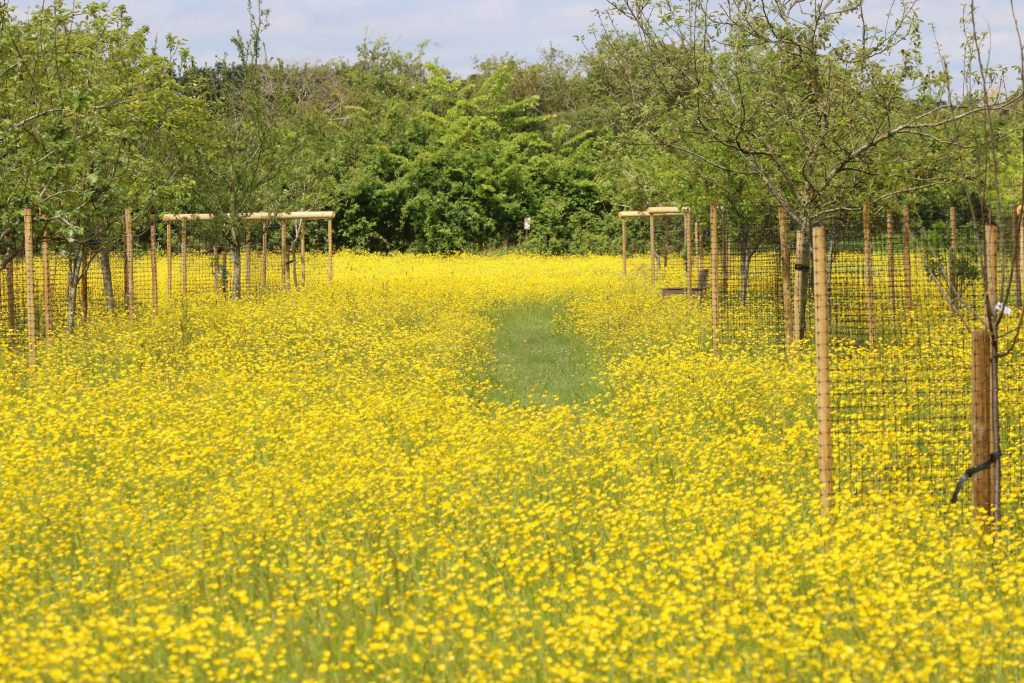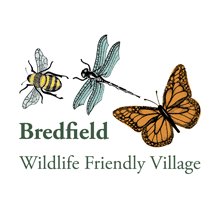Here’s a rhetorical question. Bredfield Jubilee Meadow and Orchard is a County Wildlife Site, so why isn’t it just left to grow wild? What’s with all this mowing, strimming and hedge-trimming that is happening? To answer this question fully, we have to begin a long, long time ago.

Bredfield Meadow: a sea of buttercups
There is a myth that Britain was once fully covered in forest, before humans arrived to clear the trees. This is not wholly true. We know this because of the fossil remains of many types of grazing animals, including Elk and Aurochs (a now-extinct, giant wild cow). These grazing animals must have survived on swathes of grassland, and their grazing kept bushes and trees from encroaching. These grasslands were sunny places where flowers could grow, and they would have attracted lots of insects and birds. They were the origin of the meadow.
When humans began to develop agriculture, much of this grassland was retained for grazing sheep, cattle and goats. These animals performed the same function as the wild animals that proceeded them: keeping the grass short and restricting the growth of encroaching bushes and trees. Farm labourers would also have played a part, by scything the meadow in early-autumn, and collecting it as winter food hay for their stock. This was how the traditional meadows of Britain and Europe became an established part of the landscape. Meadows exist through a relationship, of equilibrium, between humans, nature and beasts.
Meadows are no longer a typical aspect of the British landscape. Through building and through intensive agriculture, we have lost 97% of our flower-rich meadows over the last 80 years. In Bredfield, we are lucky to have a meadow that hasn’t experienced intensive farming. Critically, the soil hasn’t been ‘improved’ with fertiliser. In the words of Laurie Forsyth, of the Suffolk Flora Preservation Society, our meadow “is a wildlife treasure that has survived into the 21st Century”. There are well over 100 species of flora in our meadow. As a community, we are very lucky to be custodians of this remarkable place. It deserves our care and protection.

Mowing the meadow
There are no wild Aurochs, nor any farm animals grazing our meadow. Though some Suffolk Wildlife Trust reserves do engage in managed grazing by sheep or goats, this isn’t really an option at Bredfield Meadow and Orchard: the boundaries are not fenced, and dogs (on leads) are walked there. So, it falls to human members of the community to perform the role of animals. The sound of strimming and mowing now replaces the sound of nibbling and chomping! Through this management, the flowers are not overwhelmed by grasses and shrubs, and the surrounding hedgerow (itself a wonderful resource for nature) doesn’t encroach and take-over the meadow.
There, that was a long answer to our opening question. See you down at the meadow next Spring.

